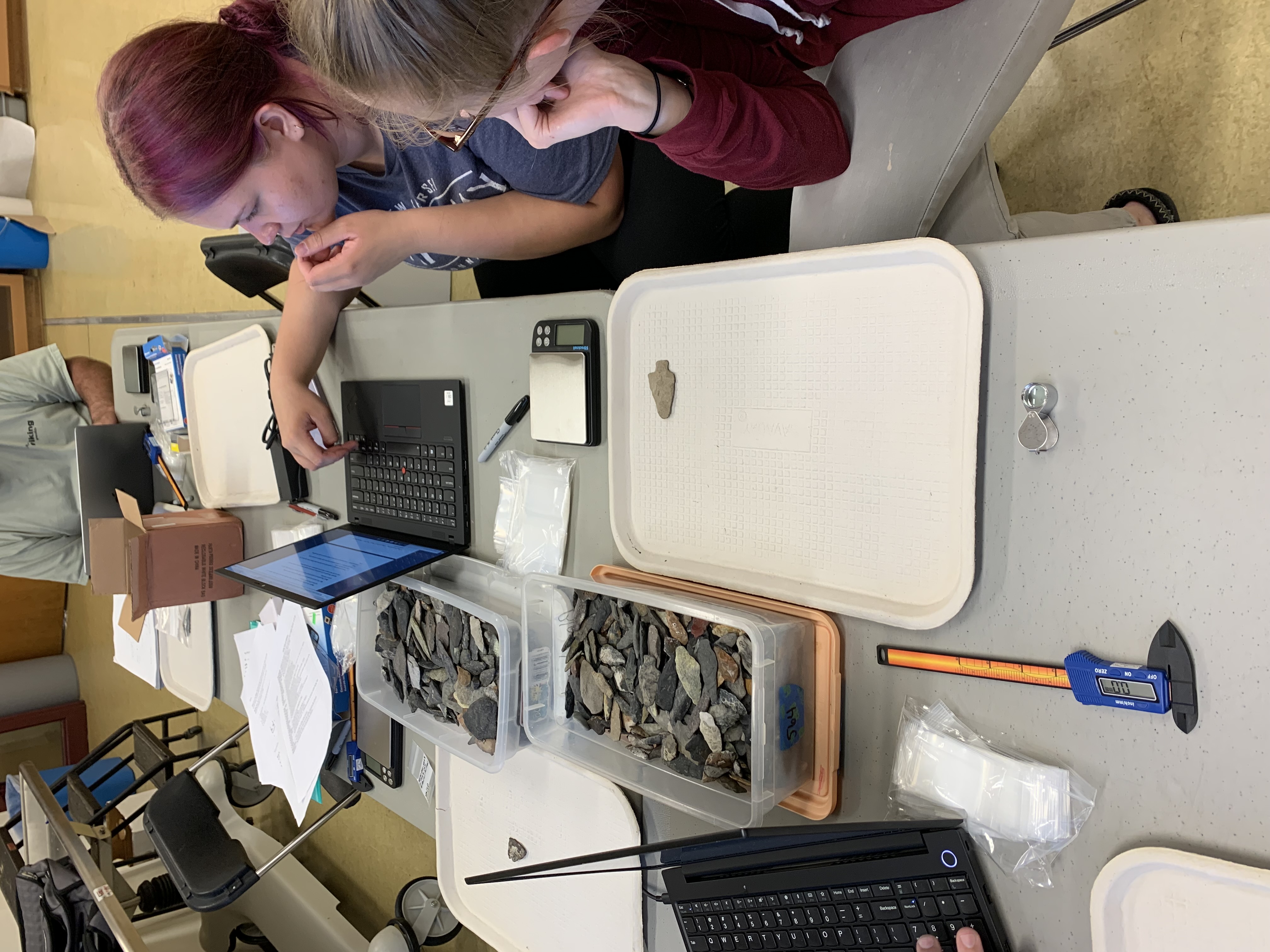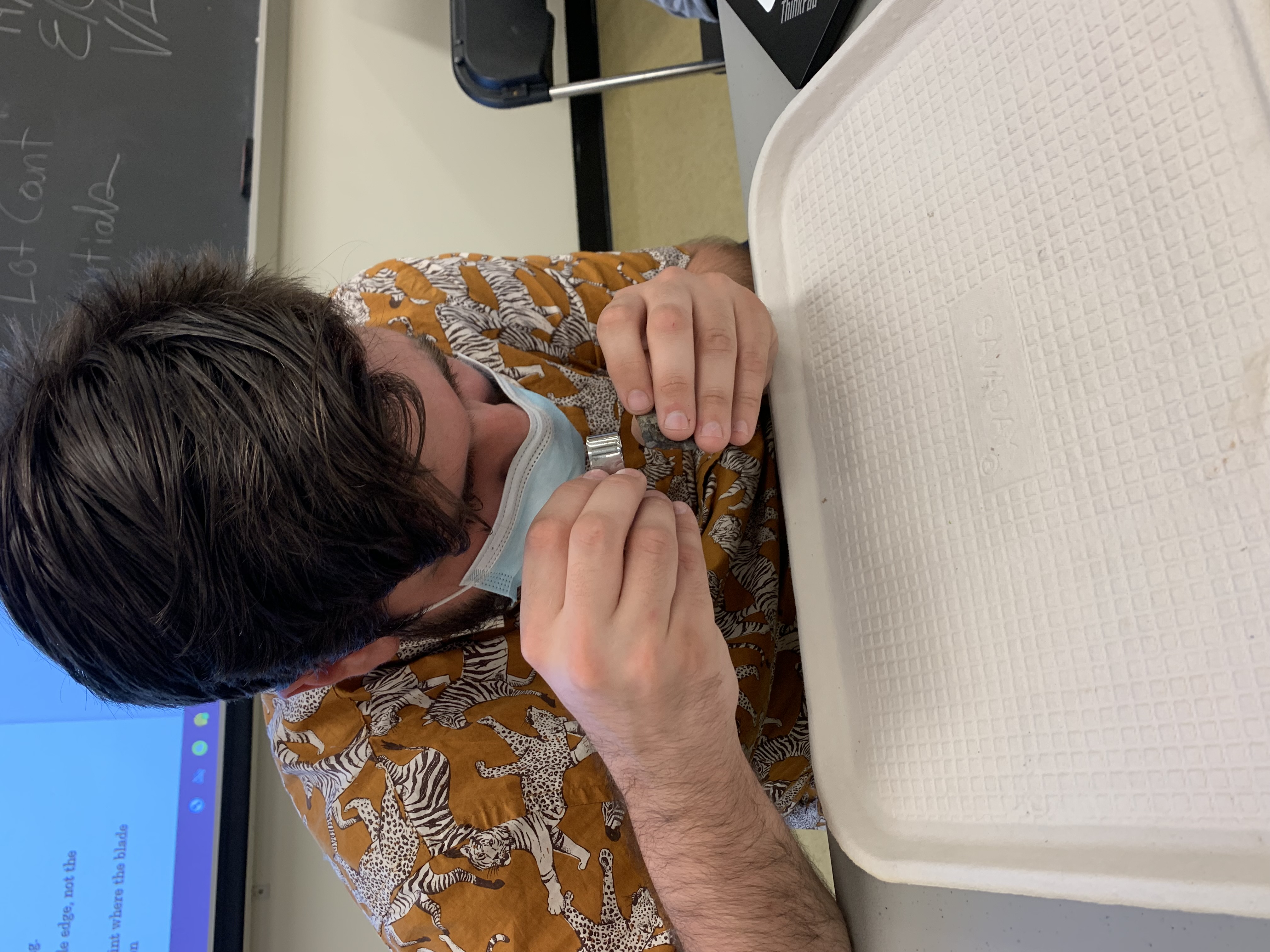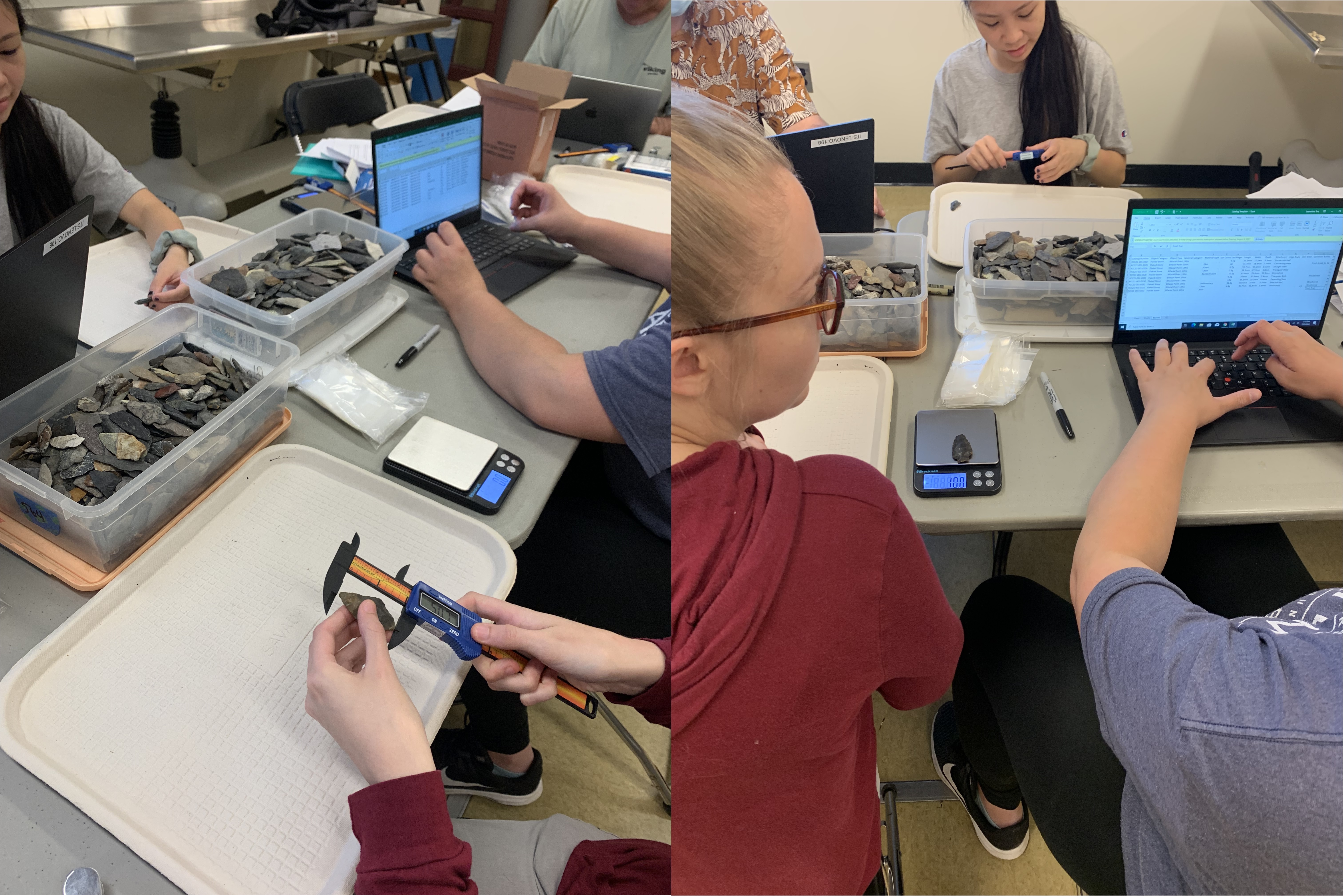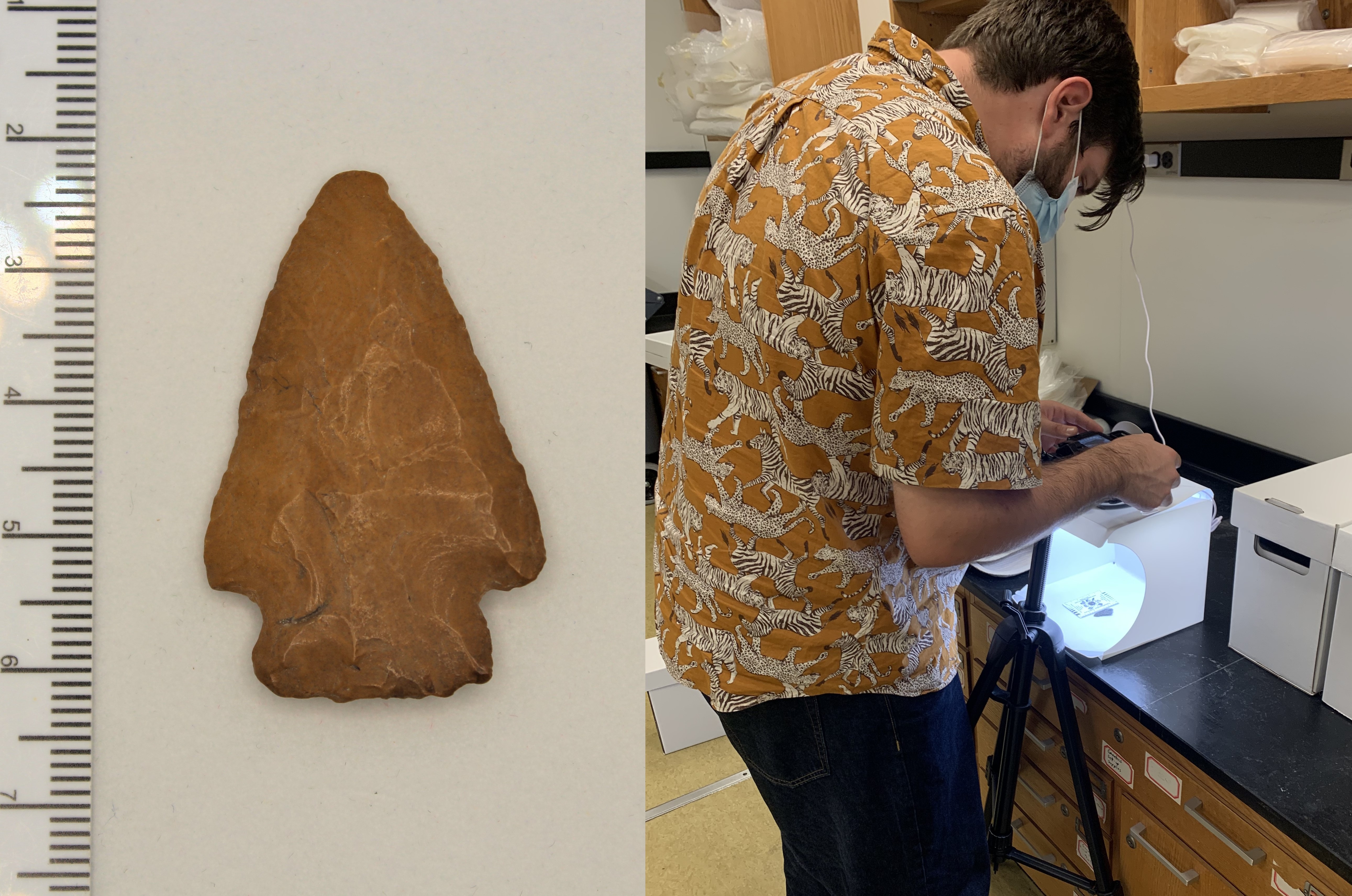Most of the RCC artifacts have been stored in bulk for decades – that is, either sharing a frame with as much as 132 other artifacts, sharing a dresser drawer with as much as 235 other artifacts, or sharing a small plastic tub with as much as 560 other artifacts. The cataloging process marks the beginning of a new life for the artifacts as they receive special individual attention and new archival-quality homes.

V. Pecoreno (top), E. Leaverton (right corner), and C. Hammarstrom (right) entering data into the project catalog; Photo by B. Hornbeck
The cataloging process is simple yet meticulous. The characteristics of each artifact are documented in the catalog to create a sort of data-driven fingerprint. The artifacts are even assigned unique identification numbers that will allow them to remain in association with their data.

J. Parr takes a closer look at the flaking patterns on this projectile; Photo by B. Hornbeck
A series of quantitative and qualitative data are collected from each artifact and entered into the catalog. Some of the data, such as the catalog number, are also copied onto a 4-mil polyethylene zip-bag to protect the artifacts from damage and potential data-loss.
The cataloging process also includes capturing still photographs of each artifact. We especially look forward to starting the process of capturing 3D scans of the artifacts soon!


Hope the work is proceeding well. Looking forward to hearing more.
So exciting that this collection is getting the study it deserves because of its size and its geographic focus.